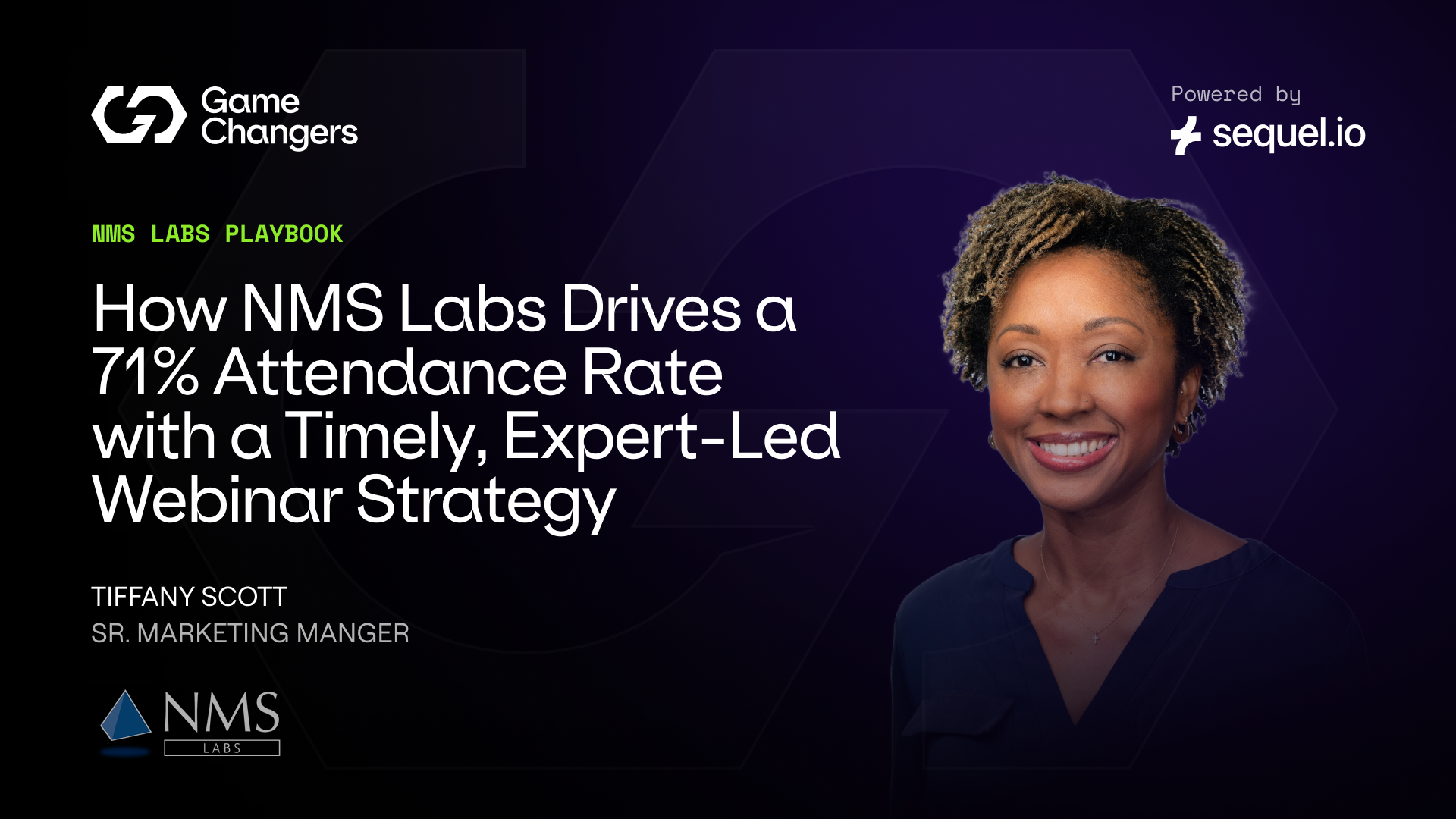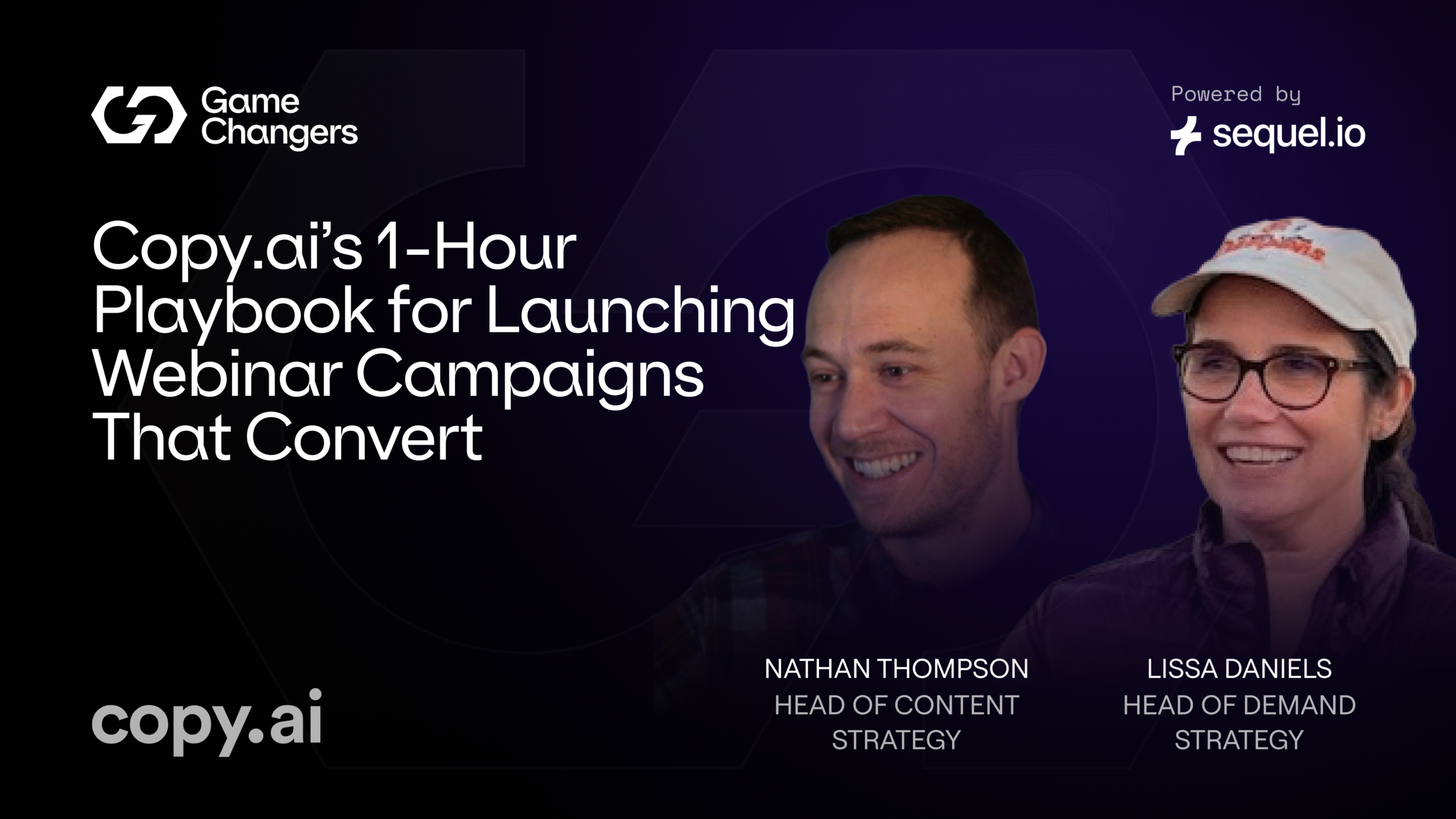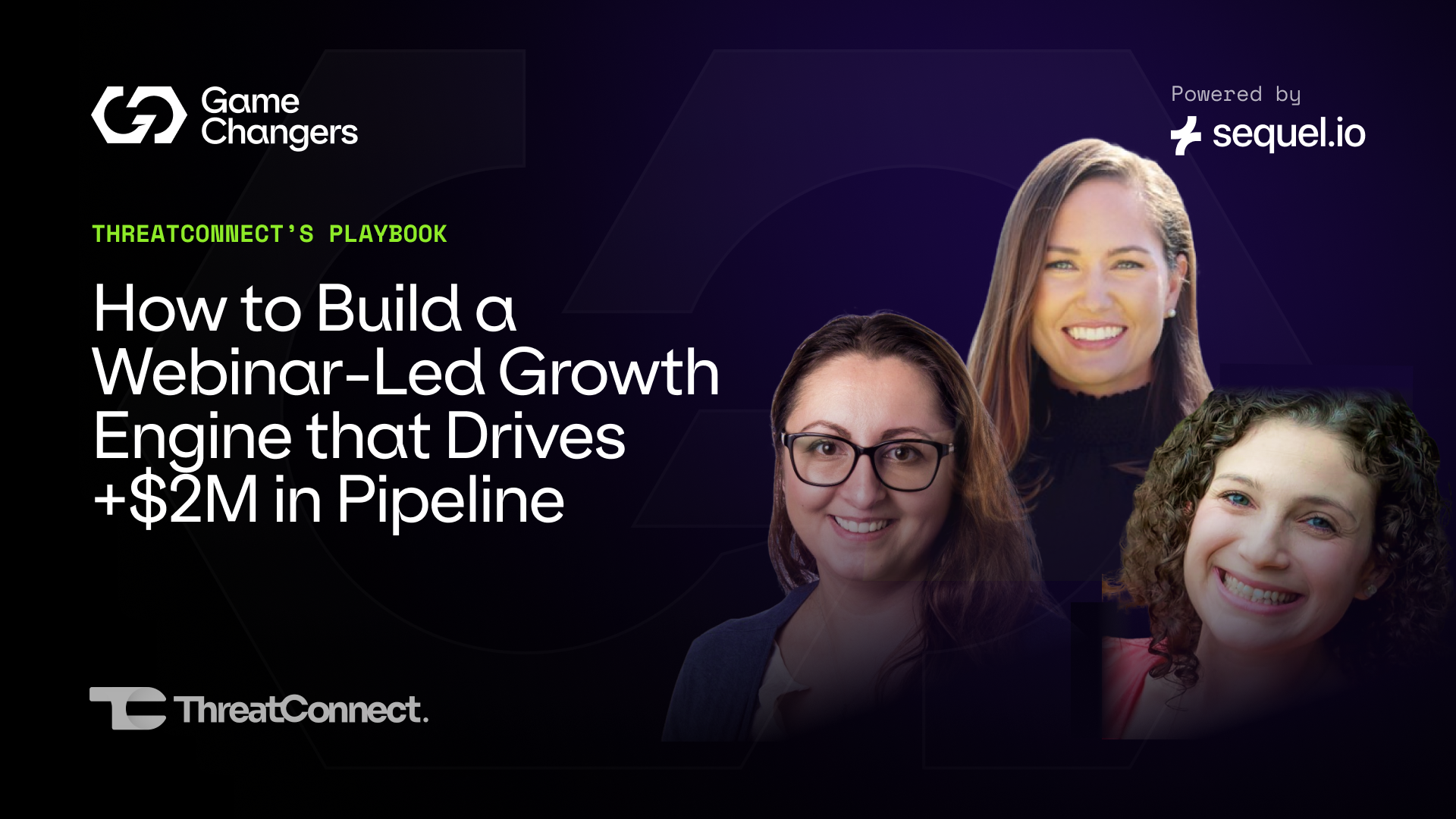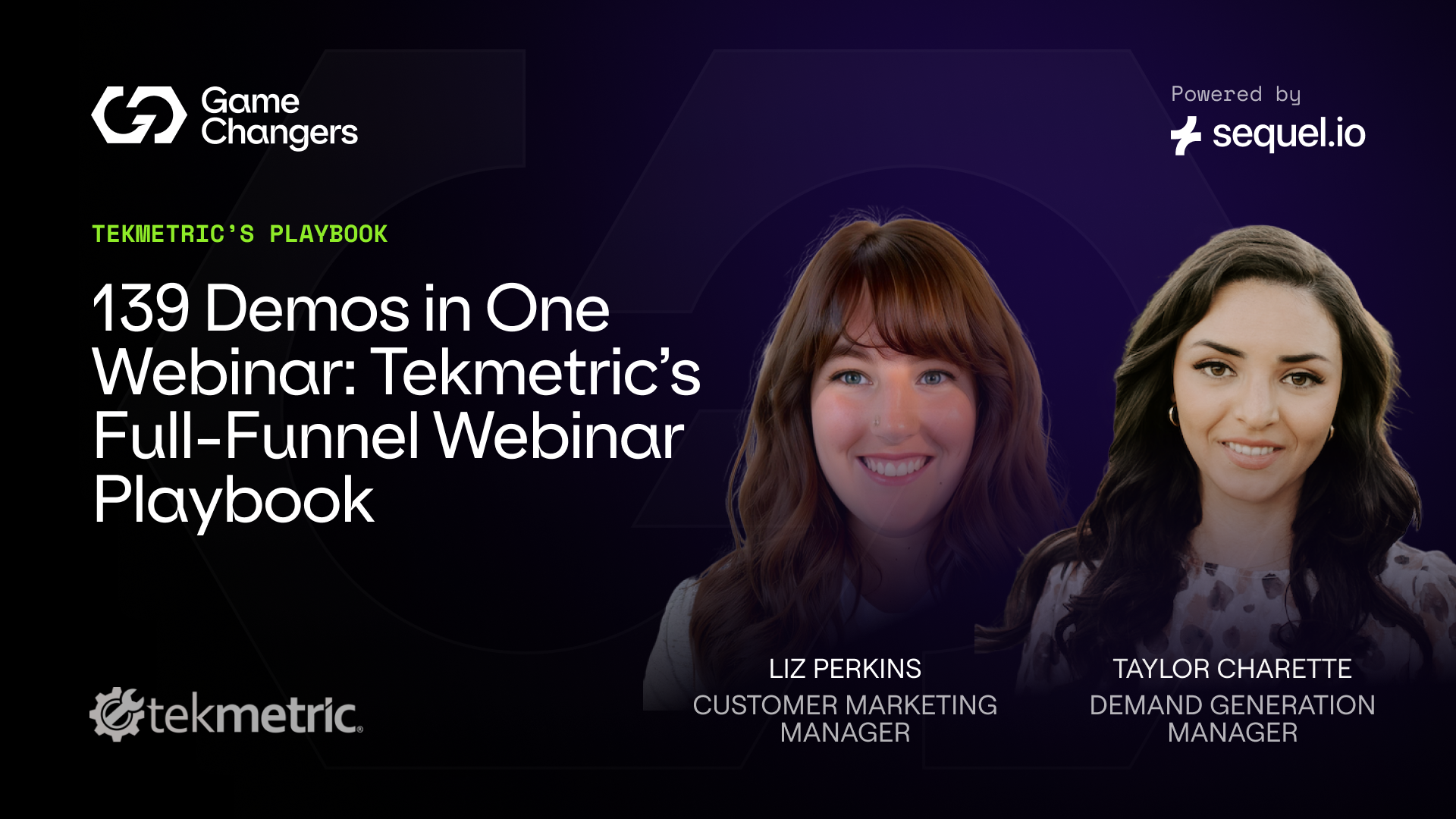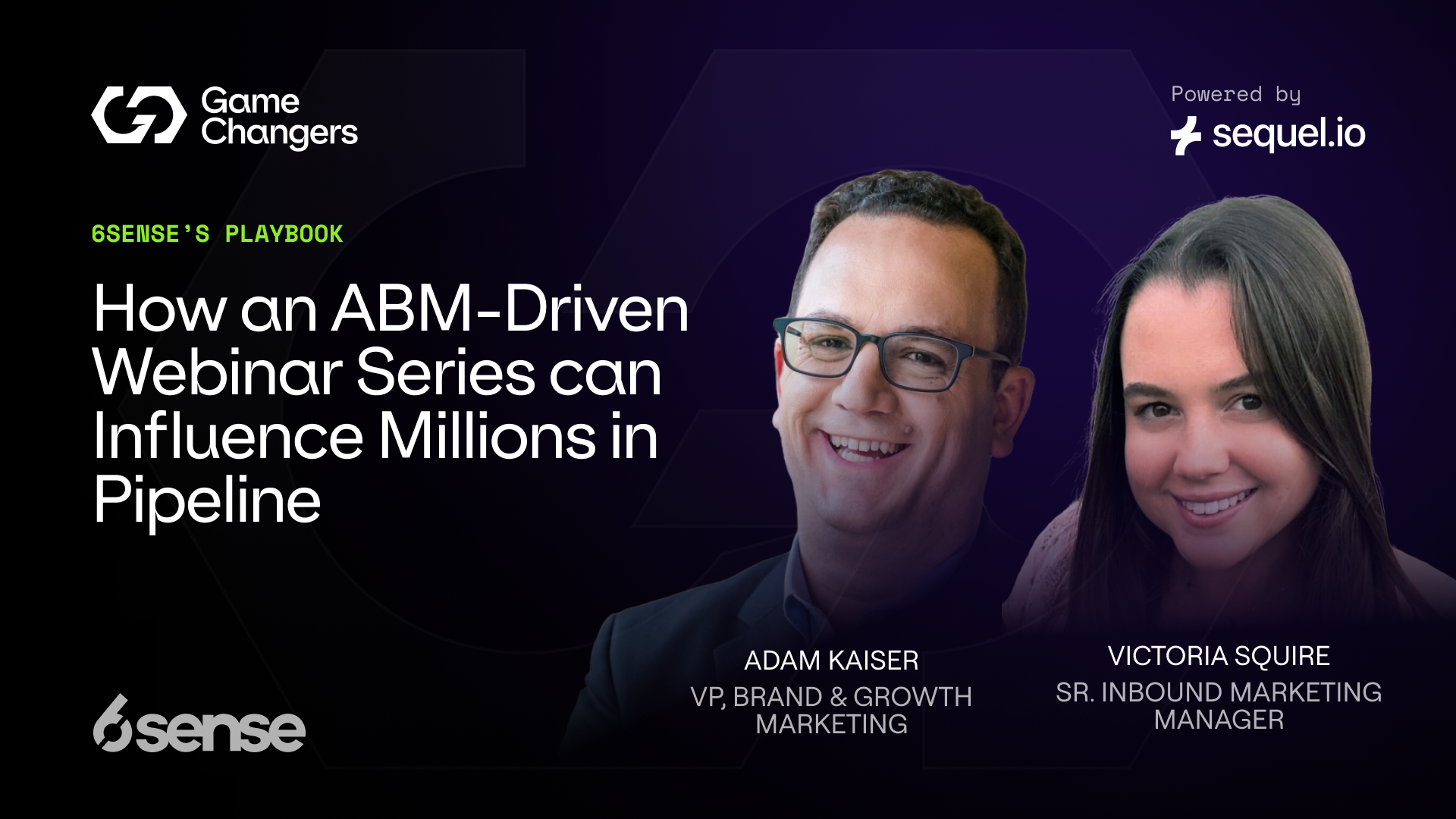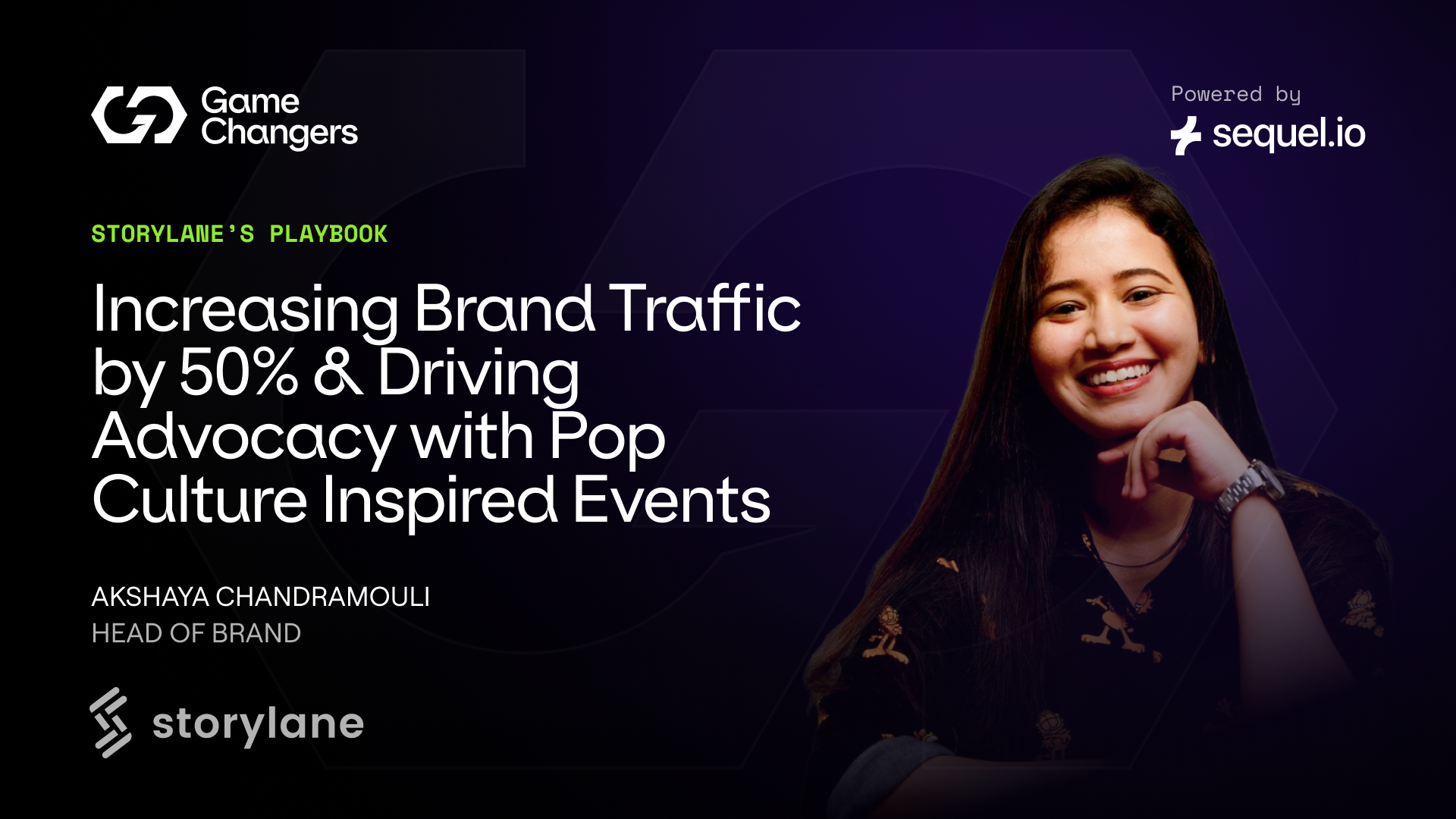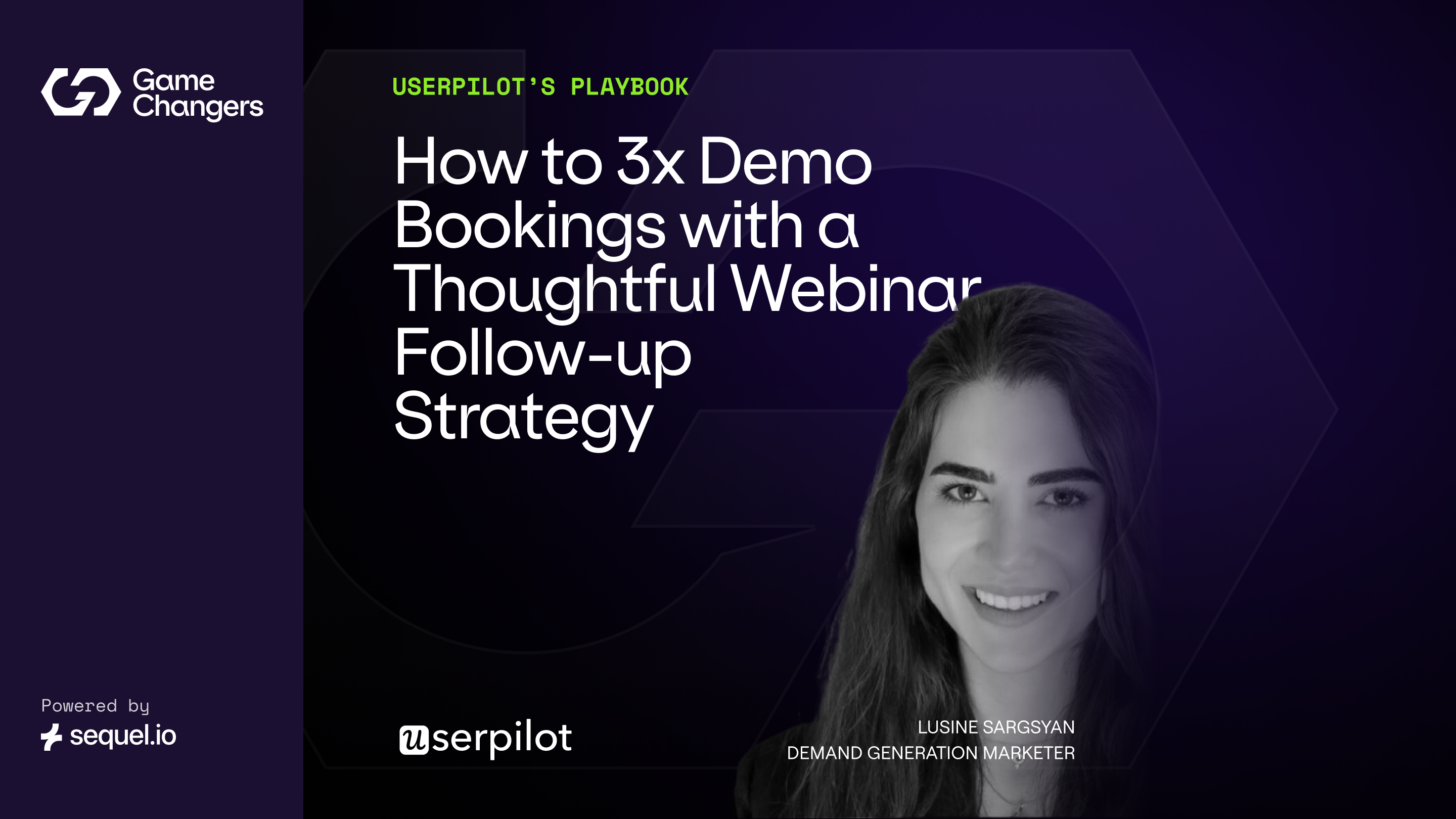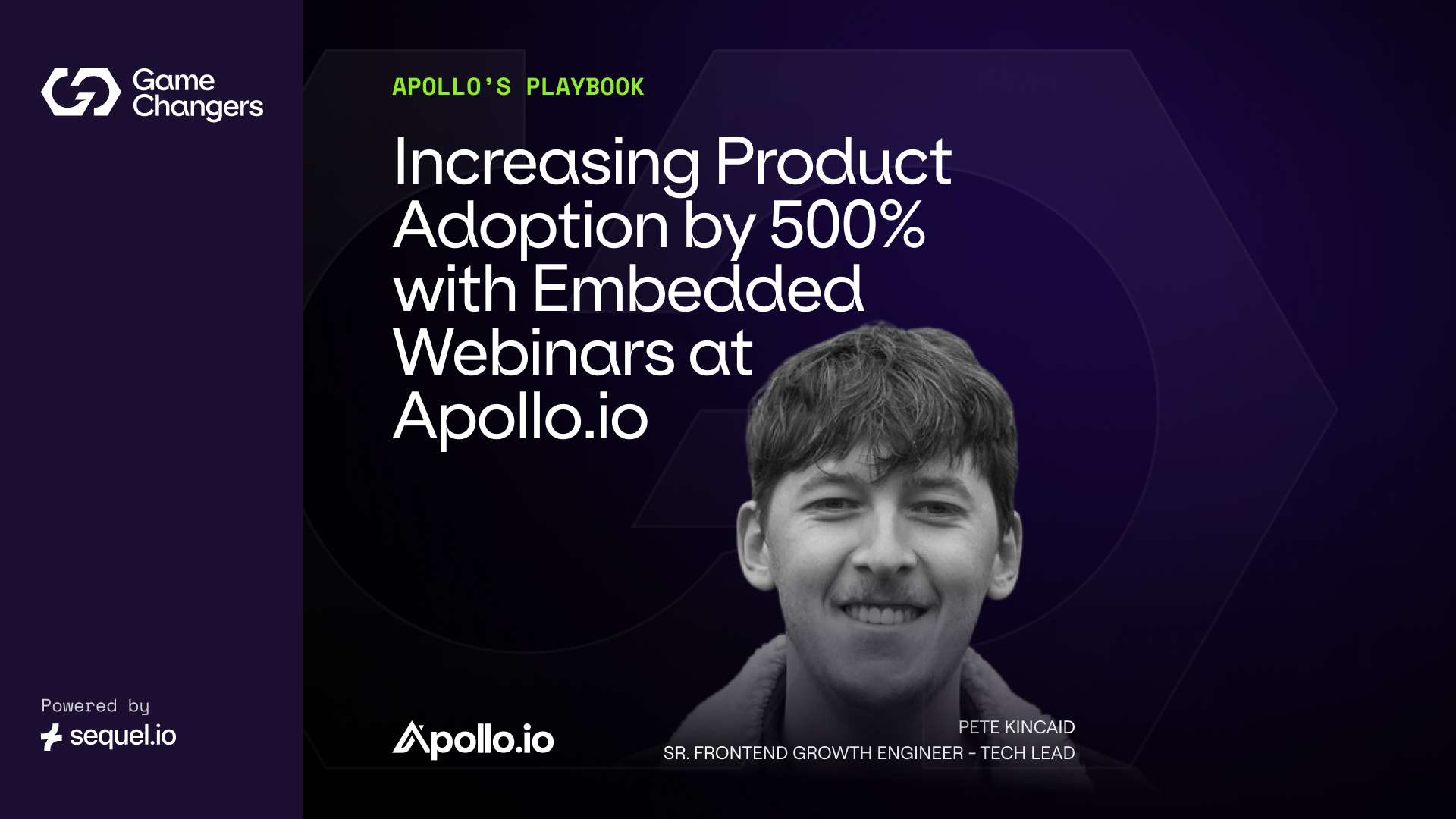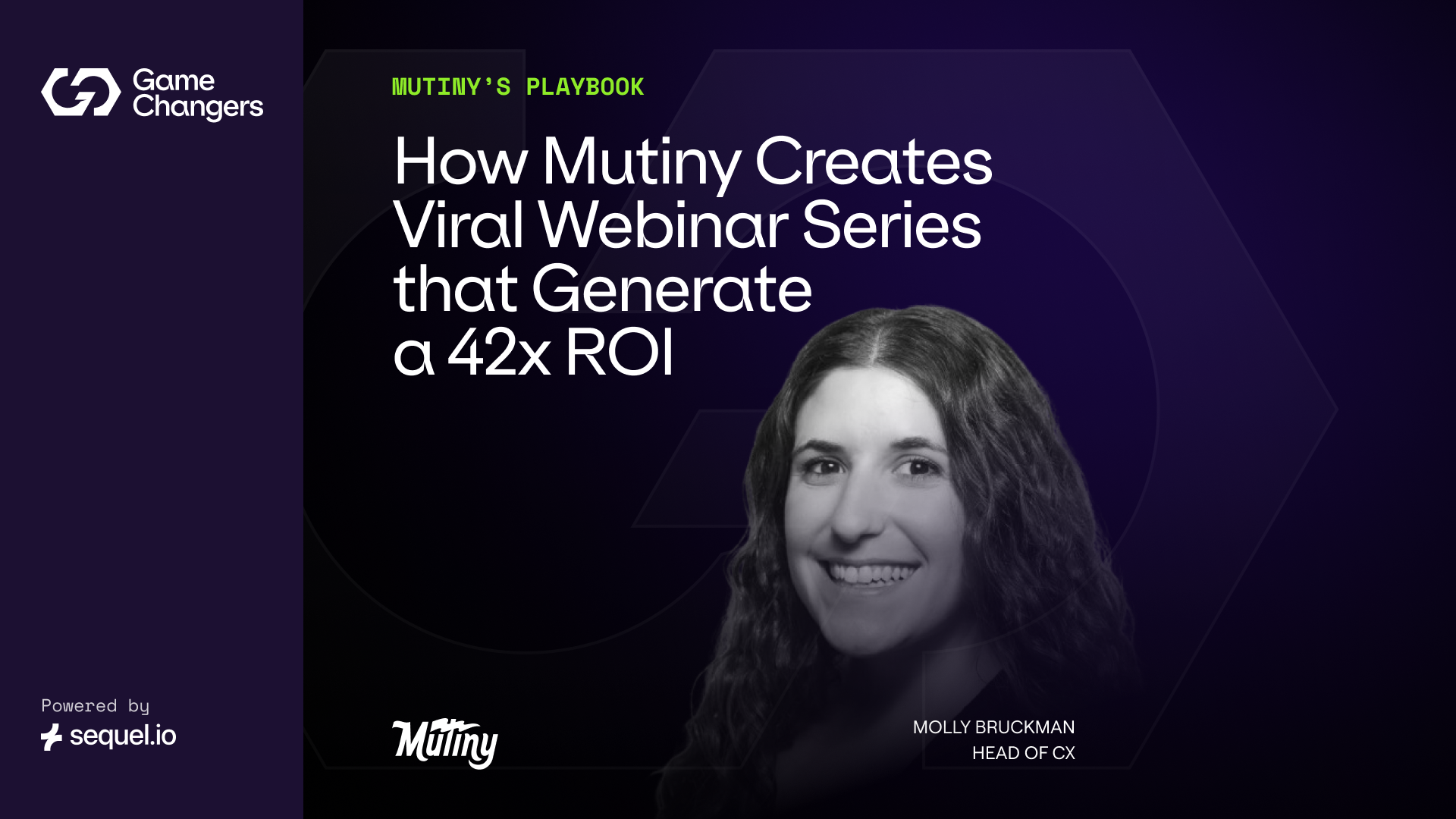Webinars have become an indispensable tool for demand generation, but not all webinar strategies are created equal. For Userpilot, the all-in-one tool for product, UX, Customer Success & Marketing teams, the secret to success lies in continuously refining its approach and leveraging the right tools to maximize revenue impact.
Lusine Sargsyan, Demand Generation Manager at Userpilot, leads their webinar and virtual event programs that have generated over 8000 registrations this year with a special shout-out to their virtual conference, Product Drive, which had a 95.2% attendance rate! But what really stands out is their post-event follow-up process. After experimenting and refining their approach, they’ve achieved astounding results including:
- 3x more demo bookings
- 4.2% conversion to demo from their nurturing sequence
- 40% open rate and 6% CTR across all follow-up emails
With event follow-ups being one of the biggest missed opportunities among marketers, Userpilot’s post-event playbook is a gold standard that marketers should seek to replicate.
Let’s dive in to see how they do it!
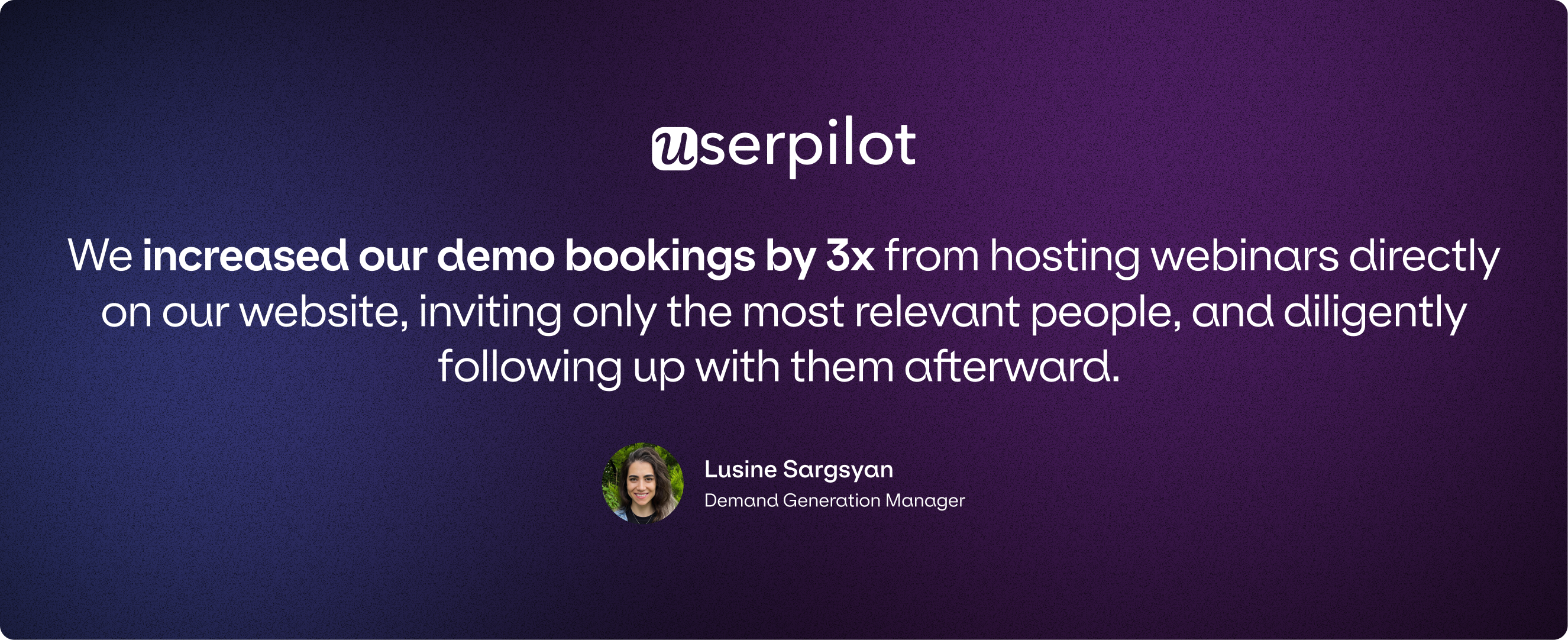
Building the Foundation for Userpilot’s Webinar Follow-up Process
Webinars and virtual events aren’t just a simple Demand Generation tactic for Lusine and the Userpilot team. These programs create a powerful flywheel that generates thousands of high-quality leads, sparks engagement, and drives strong brand awareness within the product management community.
To ensure they craft a seamless audience journey and to create context for the follow-up process, the webinar and virtual conference experience is the first thing Lusine nailed down. Userpilot’s entire virtual event program is hosted directly on their website to ensure that:
- The audience is immersed in their brand experience
- Content and resources (like their pricing page) are front and center
- Every audience action is tracked across the website so that the Userpilot team can use this first-party data to adjust their strategy
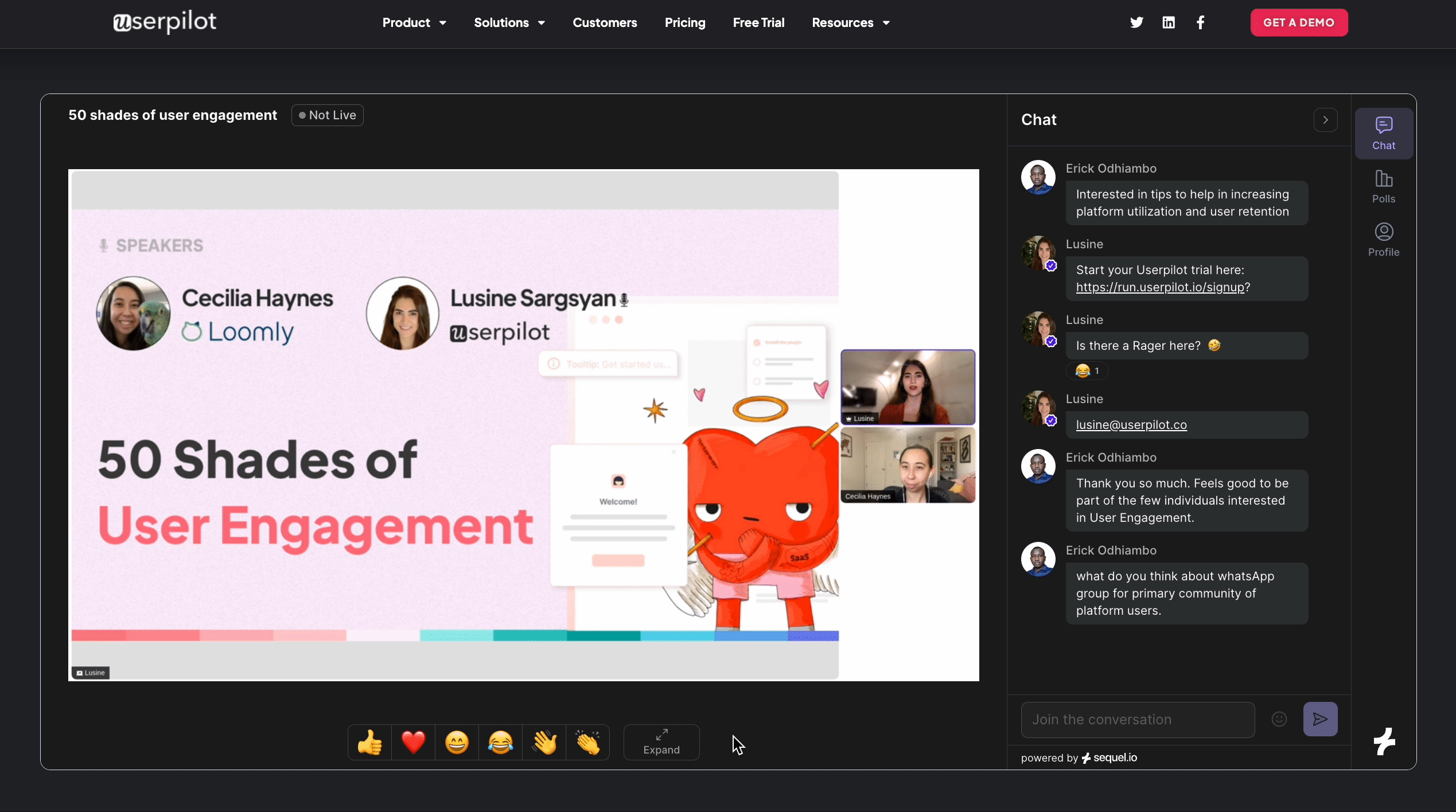
Embedding each webinar onto the Userpilot website takes minutes. Lusine simply adds a line of code generated by Sequel into their CMS and voila! The webinar is published on their website. By embedding webinars and virtual conferences directly onto their website using Sequel.io, they eliminate friction from the registration process and keep their audience engaged. This approach puts their registrants in front of their high-intent CTAs increasing demo bookings by 3x.
This quick embed step makes a world of a difference because it helps their audience get the content they need while building brand recognition that will create a strong foundation for the post-webinar follow-up process.
Implementing a Data-Driven Follow-Up Process
The post-webinar process is instrumental in driving pipeline for Userpilot and can be broken down into 3 parts:
- Segmenting audiences based on engagement and website activity data
- Triggering personalized nurturing workflows
- Nailing the marketing and sales hand-over process

1. Segmenting Audiences
Segmenting your audience may seem like a daunting task but if your webinar solution is collecting all the engagement data for you, it makes the process painless.
Based on the engagement of each registrant, you can personalize the nurture sequences to improve response and conversion rates. At the basic level, you should at least segment by attendance and engagement during the webinar. However, you can take your approach to the next level by drilling down further by persona, company size, industry, interests, and website activity.
Once you have your audience allocated into these buckets you should approach each group with targeted messaging that will relate to their specific situation and interests.
Userpilot does a great job of using targeted messaging based on audience behavior data they analyze in Sequel. This data is also synced directly to Hubspot so that they can automate emails and lead scoring to identify which leads are likely to bring in the most revenue.
Tip: Using Sequel’s Audience Insights, you can easily identify the most valuable and engaged leads so that you can double down on your personalized outreach efforts. This takes into account event attendance, poll/chat/CTA engagement, and on-demand views. You can even see what else they did on your website so that you can personalize your follow-ups even further!
2. Nurturing Registrations into Demos
With all your webinar leads segmented, it’s time to follow up and trigger your nurture sequence.
Right after each Userpilot webinar ends, the replay is automatically triggered so that registrants can instantly watch the session on demand if they weren’t able to join live. Based on their individual attendance status they will also receive an automated email with a link to the recording. This is the beginning of the automated nurture sequence that Lusine has set up to make sure no lead gets left behind.
Here is an overview of the email nurture flow that Lusine follows for each webinar she hosts.
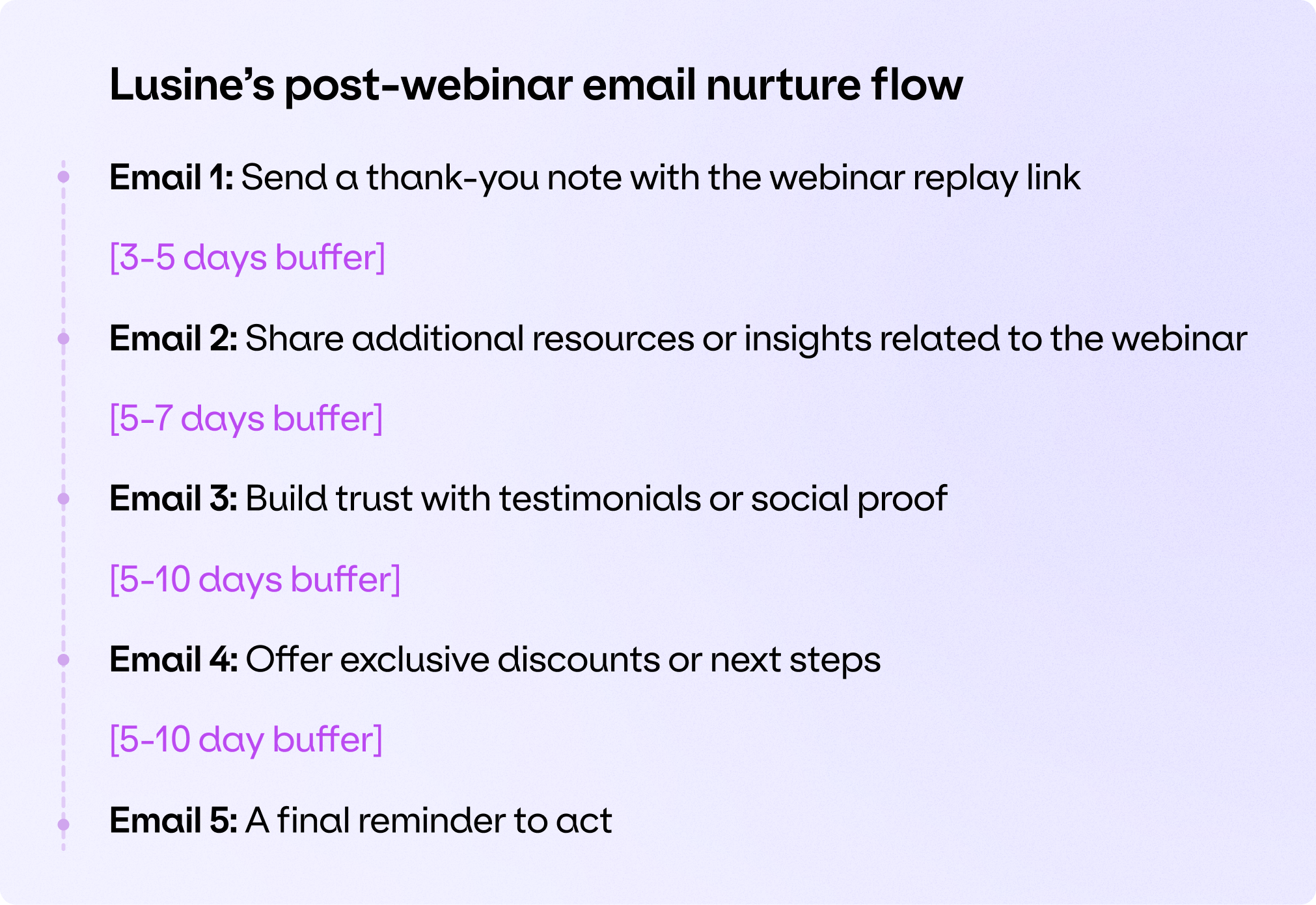
After the initial email is sent via Sequel, the contacts are then added to a Hubspot workflow that triggers the following emails tailored to each profile segment at the designated time. Userpilot’s email nurture sequence has resulted in a 4.2% conversion to demo! Looking at a more granular level, they’ve also been able to achieve a 40% open rate and 6% CTR across the entire nurture sequence. No manual work – just set up the workflow once and let it do its magic!
Imagine hosting an engaging webinar and letting technology take care of the nurturing workflows. Hundreds of registrants are receiving top-tier content, insights, and product knowledge across the span of 1-2 weeks while you launch your next webinar! Knowing that it takes an average of 8 touchpoints to book a meeting, there’s no room to let a lead fall through the cracks or not follow up on time.

3. Nailing the Marketing and Sales Hand-over Process
Everything up to this point, from segmenting leads to syncing contacts to Hubspot, enables Lusine to provide the most actionable insights to her sales team.
Scoring your webinar leads in your CRM based on key criteria to identify your ICP, helps marketing and sales prioritize personalized outreach efforts. You don’t want to spend time reaching out to people if they aren’t a good fit for your solution.
Here’s how you can easily identify the leads your team should prioritize:
- Set up lead criteria for your ICP: First, define the key criteria that make up your ICP. This might include company size, industry, job title, and page visits. Be specific and thoughtful about what characteristics are important.
- Assign point values to each criteria: For each piece of information, assign a point value based on how closely it aligns with your ICP. For example:
- Company size: 5 points for companies with 500+ employees
- Industry: 4 points for companies in fintech
- Role: 3 points for product-related roles
- Page visits: 2 points for those visiting your pricing page
- Set up a scoring system in your CRM: Create a lead scoring system in your CRM based on these criteria. For instance, a lead who matches your ICP with a score of 10 (or your defined threshold) should be considered a contender for sales to reach out to.
- Create a workflow to assign leads to sales: Set up a workflow that automatically assigns these high-scoring leads to a sales rep for follow-up. For example, if a lead’s score hits 10, it triggers a notification to a sales rep to reach out. This way, only the leads that meet your ICP criteria are passed to the sales team.
By scoring and segmenting your leads effectively, you avoid the common mistake of treating all webinar sign-ups as MQLs, and instead focus your sales efforts on leads that are ready for follow-up. But make sure to test your lead scoring framework so that you can adjust it to fit your unique set-up.

Maximizing the ROI of Webinar Content
After your webinar has ended and you’ve triggered your follow-up process, you still have more opportunities to engage your audience.
Repurposing webinar content has been a game-changer for Lusine and her team. Previously, Userpilot spent significant time and money creating blog articles and social media posts from their webinars. With Sequel AI, they’ve automated this process so Lusine can repurpose and distribute content within minutes versus weeks – at a fraction of the cost.
One webinar can be turned into infinite content pieces that continue to prompt interactions with their audience as they complete the follow-up process.

Replicating Userpilot’s Post-webinar Playbook
Userpilot’s journey highlights the power of incorporating webinars into a broader marketing strategy. By focusing on seamless user experiences, thoughtful follow-ups, and efficient content repurposing, you can turn webinars into reliable drivers of leads and revenue. Better yet, you could follow in Lusine’s footsteps to:
- Generate 3x more demo bookings
- Achieve a 4.2% conversion to demo from your nurturing sequence
- Fuel over 8,000 webinar and virtual event registrations
To replicate Userpilot’s success, here’s a step-by-step recap to building a high-impact webinar follow-up strategy:
- Streamline the Registration Process: Embed webinars on your website to minimize friction in the audience journey and immerse them in your brand experience.
- Own Your Webinar Data: Identify your most valuable leads by collecting & segmenting first-party audience engagement data.
- Automate Nurturing Workflows: Integrate Sequel and your CRM to create targeted follow-up sequences, trigger lead scoring, and streamline the hand-over to sales.
- Repurpose Webinar Content: Leverage AI to turn webinars into evergreen assets like blogs, social posts, & video snippets that continue to provide value to your audience without the manual work.
Webinars are no longer just about presenting content—they’re about creating meaningful, measurable engagement. By implementing Userpilot’s post-webinar playbook, you can transform your webinar program into a scalable, demand-generation engine that drives growth and efficiency.
Want to 3x your demo bookings? Find time with us to see how you can use Sequel to replicate Userpilot’s webinar playbook within your own organization.






